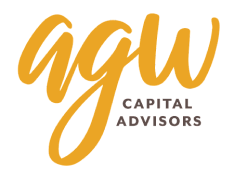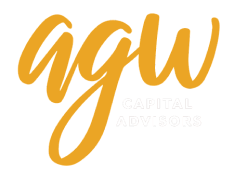2019 Volatility in the Markets
As the year draws to a close, we would like to share a few thoughts on the recent market volatility that we hope will help put things in clearer perspective. First and foremost, while disconcerting, market volatility is entirely normal. In fact, the average intra-year decline of the S&P 500 since 1980 has been 13.8%.[1] This is an important reminder, as many investors were perhaps lulled into complacency given recent history, e.g., in 2017 the S&P 500 increased every month for the first time ever and fell, at its most, only 3% from its high.
The axiom that markets hate uncertainty is particularly apropos today, as the uncertainties are unusual in number, size and complexity. At the same time, there remains much to be bullish about. Remember that it takes two sides to make a market – for every buyer there’s a seller – and neither side knows the future with certainty.
Legendary investor Peter Lynch summed it up best by saying: “There will always be someone predicting disaster and someone predicting great fortune. At one time or another, each will be closer to correct than the other…I’ve always said that I don’t know which way the next 1,000 or 2,000 points in the market will go, but I believe that the next 10,000, 20,000 and 30,000 points will be up.”
As we have done since our inception, we continue to invest for the long term and maintain a steadfast discipline to investment programs built on time-tested principles, the wisdom of great investors, and sound academic research and empirical data.
We encourage you not to dwell on the latest news headlines, negative prognostications, and stock market oscillations. Instead, we hope you will stay focused on the long term and take comfort in knowing that we are carefully monitoring the capital markets and will take action, as appropriate. Hopefully, this will allow you to better enjoy all that’s special about the holiday season.
Of course, we would love to hear from you should you like to discuss any of this further.
All the best,
Your team at AGW
P.S., If of interest, underlying our view point above are a number of positives and negatives that we see as having the largest impact on the global economy and capital markets. These follow below:
Positives
GDP growth
2018 GDP growth in the U.S. is likely to be the best we’ve seen in over a decade, finishing the year at or above 3%.[2] Similarly, around the world, GDP growth should increase by over 2% in developed markets and remain relatively robust at nearly 5% in emerging markets. The benefits of this growth are reflected in lower unemployment and higher personal spending, as well as in surveys of consumer sentiment and small business sentiment. This all suggests that a recession is unlikely in 2019.
Corporate profitability
Corporations are enjoying profitability in 2018 that is nothing short of spectacular. In the U.S., the S&P 500’s year-over-year earnings are expected to finish up over 20%.[3] This phenomenon is not isolated to the U.S., as companies in the rest of the world are also enjoying strong profit growth.[4]
Company valuations
With the exception of a handful of richly valued tech stocks, company stock valuations were actually reasonable even before the recent, sharp decline in stock prices. With earnings up and prices falling, valuations are becoming even more attractive. At present, the forward price-to-earnings multiple of the S&P 500 is roughly 14 times, which is below its 25-year average of 16.8.[5] Outside the U.S., valuations in international and emerging markets are even more compelling. Excess valuations that might be indicative of a broad stock-market bubble, such as the one we saw in the late 1990’s and early 2000’s, are just not there.
Negatives
Geopolitics
The rise of nationalism and populism can be seen in Britain, where the country may end up crashing out of the European Union. Similarly, in France, President Macron’s attempt to enact reforms has been met by “Yellow Vest” protests sweeping the country. Meanwhile, Italy’s populist government finally bowed to the demands of the E.U., but only after realizing the potential perils of disregarding the bloc’s financial rules to stop it from dramatically increasing government spending.[6] What all this means for the future of the E.U. remains an open question.
We’re not immune to this in the United States. Our government continues to “kick the can down the road,” failing to address our country’s mounting fiscal and structural challenges. The U.S. is running massive deficits, unheard of outside of war time or recession. These deficits continue adding to a national debt that’s over $21.9 trillion.[7] With Democrats winning control of the House of Representatives, we’ll likely see very little accomplished under divided government to address these and other challenges.
In China (the largest of the emerging market countries), the impact of the trade war with the U.S. is evident in its slowing economy, as recent GDP growth is failing to meet market consensus forecasts.[8] Tariffs have been an unwelcome challenge to a Chinese government in the midst of attempting to engineer a massive structural change to modernize the country’s economy and to move it from being predominantly manufacturing-based to one that is more service-oriented.[9]
As all of this indicates, there are questions aplenty for investors to grapple with, including what the new global world order will look like as the American hegemony and dominance that characterized the post-WWII era wanes and other countries assert themselves on the global stage.
Rising interest rates
Central banks continue taking steps to wean their respective economies off of the extraordinary easy monetary policies (e.g., zero interest rates, quantitative easing, etc.) enacted in the aftermath of the global financial crisis. The U.S. Federal Reserve has moved the fed funds rate steadily over the past three years up to 2.5%. Whether the pace is too quick or too slow remains a subject of great debate. More importantly, is what the Fed is telegraphing for 2019, which, at present, is to raise the rate two additional times to 3%.[10]
Aside from credit getting more expensive, the chance of making a policy mistake is uncomfortably high in the midst of these complex, unusual, and volatile times. And this concern is only heightened by the fact that the economic recovery that has followed the global financial crisis is now one of the longest on record.
Growth peaking
While the strong GDP growth referenced earlier is a positive, the negative side is that it’s widely expected to slow in 2019 and beyond. The pace of the decline is expected to be measured, but it raises concern of a recession in the next few years. Similarly, corporate profit growth, powered by record profit margins and tax cuts this year, is expected to slow to the mid-single-digits next year, making year-over-year comparisons challenging.
- JP Morgan Asset Management, Guide to the Markets, page 5. Data as of September 30, 2018.
- https://www.cnbc.com/2018/10/04/booming-economy-may-soon-be-the-strongest-since-1999.html
- https://www.factset.com/
- https://funds.eatonvance.com/includes/loadDocument.php?fn=18538.pdf&dt=FundPDFs
- JP Morgan Asset Management, Guide to the Markets, page 14. Data as of September 30, 2018.
- https://www.nytimes.com/2018/12/19/world/europe/italy-eu-budget.html
- https://www.usdebtclock.org/
- Forbes: https://www.forbes.com/sites/kenrapoza/2018/12/17/chinas-new-growing-pains-not-all-because-of-trade-war/#1d23f6e72fb7
- https://www.forbes.com/sites/kenrapoza/2018/12/17/chinas-new-growing-pains-not-all-because-of-trade-war/#b3d49102fb7d
- https://www.cnbc.com/2018/12/19/fed-hikes-rates-by-a-quarter-point-.html

